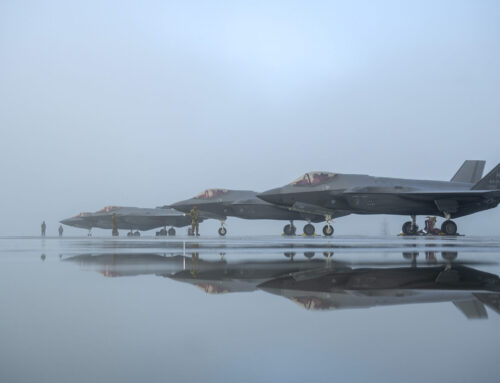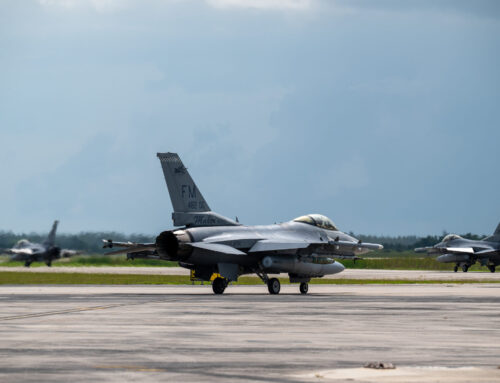Smoke billows from the site of an Israeli airstrike in Marjayoun, near the Lebanon-Israel border, on September 23, 2024. (Photo by RABIH DAHER/AFP via Getty Images)
Over the last eight days, Israel has launched an extraordinary two-part campaign against Hezbollah, its longtime nemesis located in Lebanon. In the first part, Israel took out thousands of its opponents in two highly targeted attacks with minimal collateral damage, perhaps the greatest counterinsurgency stroke in history. The second part, currently unfolding, is a series of highly successful air attacks against Hezbollah leadership and facilities — precise, but with considerable collateral damage.
The astounding ability to reach out and target Hezbollah’s heart is a victory for Israel’s intelligence services and a severe blow to Hezbollah — not just to their operations, but to their long-term sense of security and stability. Not only will there be the immediate effects of greatly weakening the adversary’s forces, but the secondary effects on leadership, recruitment, communications, logistics, and internal cohesion will hurt Hezbollah for years.
The militant group will not disappear — it is an ideology as much as an organization — but these attacks will reduce Hezbollah’s strength, proficiency and standing amongst membership and the regional population.
To briefly review the first phase: On September 17, at the same moment, thousands of pagers exploded, followed one day later by exploding walkie-talkies. In all, over 30 people were killed and 3,300 injured, according to official sources, though the actual number could be much higher. Most of the wounded will eventually recover, but many injuries, like the loss of a hand or eye, will cause lifelong impairments.
Despite loose rhetoric about “indiscriminate attacks,” and the tragic loss of life from family members of Hezbollah operatives, this was precisely targeted. The only people carrying Hezbollah pagers and walkie-talkies were Hezbollah operatives who needed them for their malign activities. The devices had limited other uses; they were not phones that could be used for personal business or entertainment. Thus, when such a device injures the Iranian ambassador to Lebanon, it means that Hezbollah gave him one that he kept on his person. That’s not a surprise considering how close Hezbollah and Iran are; the ambassador made himself a military target.
To put this action into perspective, outside estimates are that in 11 months of war, Israel has killed 6,000 to 8,000 Hamas fighters. To do that, the Israelis have used thousands of munitions, including 2,000-pound bombs, to lever the Hamas insurgents from their fortified positions. Insurgents, by their nature, hide among the population. Counterinsurgency must ferret them out, often using blunt methods and inflicting great suffering on the civilian population. Thus, this campaign has caused about 40,000 dead and 92,400 wounded, as estimated by the Hamas health ministry. In two days in Lebanon, Israel inflicted about half the number of casualties on Hezbollah with very little collateral damage. That’s extraordinary. It’s like having a magic wand that attacks only the enemy and spares others. It’s hard to think of any comparable action in the history of counterinsurgency that displayed this broad scope and precision
The second phase of the Israeli campaign is playing out daily as Israel uses its air power to attack Hezbollah’s leaders and infrastructure. An attack on September 20 killed several high-ranking leaders. On Monday, Israel attacked 1,600 targets, including leadership, storage facilities, manufacturing plants, and personnel. On Tuesday, Israel struck Beirut itself in an action early reports say was going after a top Hezbollah leader. The ability of the attacks — and there likely will be more by the time you read this — to strike leaders and, based on social media videos, weapons storage facilities, speaks to the precision of Israel’s intelligence on the ground.
These attacks have been “precise” in the sense that they are accurately striking valid targets. However, they are not free of collateral damage as the pager/walkie-talkie attacks largely were. These air attacks look more like the actions in Gaza, which have taken out both fighters and civilians. Lebanon is claiming over 500 civilian deaths from Monday’s attacks, a number that tragically will likely grow.
Long Term Impacts
So, what will the effects of this campaign be? Predicting how the current fighting will play out is highly speculative and will depend on what Israel and Hezbollah do next. But one thing that seems assured is that the attacks’ secondary and tertiary effects will haunt Hezbollah for years.
At a organizational level, there has been a major blow to the leadership. Hezbollah has lost many of its experienced and senior personnel, and will lose more. There will always be replacements, ambitious and dedicated subordinates who will step up to replace a killed principal, but they will lack the experience and authority of the originals, at least for a while. Further, there will be an organizational stutter step as it adjusts to new leaders. This is particularly a problem for non-state groups where legitimacy is tied as much to personality as it is to organizational position.
Then there is the blow to Hezbollah’s reputation. Israel has devastated its organization and leadership. In response, Hezbollah has launched hundreds of rockets into Israel, with little effect. For an organization whose legitimacy has been based on the idea it can protect its people, and even hold territory, it appears to be flailing. Indeed, Hezbollah has urged Lebanese to flee because it can no longer defend them.
Taken all together, recruitment will suffer. Every day, potential recruits will see the many injured Hezbollah fighters, some of whom will never fully recover, and wonder about the group’s competence and the risks of involvement. For decades, the Israelis had a nearly mystical reputation for being able to strike enemies unexpectedly and at a distance, and that reputation has taken a quantum leap ahead.
At a tactical level, Hezbollah’s communications have been disrupted. Few people will now be willing to use a Hezbollah-supplied device, given the demonstrated risk — already, some airlines are outright banning pagers and walkie-talkies from flights over fear of further sabotage. Hezbollah will need to use other mechanisms: couriers, cell phones, landlines, e-mail, or chat functions. Because there are many possibilities, Hezbollah will not lose control of its military forces or political organization. However, all alternative communications have disadvantages.
Some mechanisms are vulnerable to compromise — that’s why Hezbollah was using pagers and walkie-talkies in the first place. For example, cell phones are notoriously prone to interception because of their continuous broadcasting. The United States tracked many ISIS operatives through their cell phones, but doing so doesn’t even require the resources of a national government. The internet is awash with information about how individuals can intercept calls. Phone calls by Russian soldiers in Ukraine are routinely intercepted and reported on.
Other methods are more secure but inefficient. Whereas pagers could inform 10, 100, or 1,000 personnel with a single message, landlines require making that many individual calls. Typically, that entails building “phone trees” to divide the work. Not only is the process slow, but each call carries the possibility of compromise. Couriers — the means of communication for millennia — are secure but slow and visible. Many people will see the messages being delivered. Remember, Osama Bin Laden’s hideout was found by tracking a courier.
Yet, the indirect effects go even further. Hezbollah cannot be sure whether other devices weren’t compromised. If the Israelis did compromise the pager batteries, then every battery-powered weapon in Hezbollah’s arsenal is suspect. That includes thousands of rockets. True, it’s unlikely that the Israelis were unable to tamper with all these different systems, but how likely were the original attacks in the first place? Hezbollah cannot take chances and will need to disassemble and inspect virtually everything in its arsenal on the verge of what might be a conflict with Israel.
Finally, a search for scapegoats and possible traitors is inevitable; indeed, it has likely started. Someone in Hezbollah’s logistics operation screwed up. For most Hezbollah logisticians, this might have been the unwitting result of operating in the shadows using front companies and cutouts. But someone in the long supply chain knew that these pagers and walkie-talkies were weapons, not communications devices. Who was that person, and where were they in the supply chain?
The leadership attacks of the second phase will also engender suspicions of betrayal. How did Israel find all those locations? Overhead and electronic surveillance may explain some intelligence, but there was undoubtedly some on-the-ground reconnaissance. Were there traitors inside the organization? Insurgent organizations are naturally suspicious of internal betrayals. Interrogations will be widespread, likely harsh, and possibly followed by executions. The organization may tear itself apart.
As many have pointed out, tactical success does not always lead to strategic success. Japan’s attack on the United States in 1941 is a classic example of adapted technologies and innovative concepts producing a brilliant tactical success but ending ultimately in strategic failure. For Israel, the blow to peace negotiations and the possibility of escalation into a major war could overshadow the tactical value of taking out even thousands of enemy combatants. Time will tell.
Nevertheless, the tactical success so far is spectacular and undeniable — and will hurt Hezbollah’s ability to operate and define itself as a top-tier competitor to Israel.











